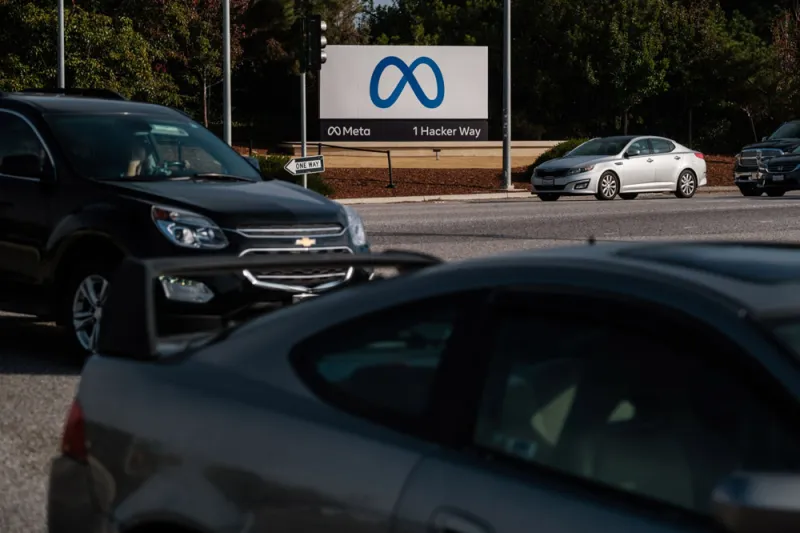The largest companies in the world are primed to engulf the markets they dominate — and then implode.
In a written commentary sent to Institutional Investor, portfolio manager Sashi Reddy predicted that the largest global companies by market capitalization and profits would meet a fate similar to the dramatic and all-encompassing death of a large star. Reddy works at Stewart Investors, a long-term investment portfolio manager with $25 billion in assets under management.
A large star’s death releases “one of the biggest cosmic fireworks in the universe,” an effect known as a supernova, Reddy explained in the commentary. He argued that dominant tech companies Facebook (now called Meta), Apple, Microsoft, Amazon, and Google parent Alphabet would have a (metaphorically) similar downfall.
“To people looking at these companies at the surface level, it’s everything a financial investor would like… But under that surface layer, there’s a lot of stuff bubbling away beneath it,” Sujaya Desai, a Stewart investment analyst and Reddy’s colleague, told II. “We’re long-term investors focusing on absolute returns, so our job is to [identify] risks to companies over the next 10 to 20 years.”
In his note, Reddy drew similarities between Facebook, Apple, Microsoft, Amazon, and Google — which he referred to collectively as FAMAG — and large stars on the precipice of dramatic implosion. He noted that the market capitalization of these five tech companies is equivalent to 40 percent of the U.S gross domestic product, and that they generate around 15 percent of U.S. corporate profits. However, he said they only paid 14 percent in taxes, below the U.S. corporate tax rate of 21 percent.
“To many observers, much like the massive stars, such companies look wonderfully positioned with strong growth rates,” Reddy wrote. “What’s bubbling beneath this glowing surface, however, is usually a precarious balance between rising risks at the core and growth at the surface that likely will be incrementally harder to come by.”
Speaking to II, Desai added that managing shareholder expectations through unparalleled growth is often a “balancing act” out of which few large companies emerge triumphant. As these companies grow, they must balance the interests of their businesses, their employees, the government, their customers, their supply chains, and other unforeseen factors, Desai said.
“As a company continues to grow in size, that balancing act continues to get trickier,” Desai said. “Alongside all of the innovation and positive pushes, there are a few risks.”
These risks include impending governmental regulation, dissent from employees within the companies, and shareholder concern about tax efficiency, Desai said.
In the commentary, Reddy claimed the scope of the FAMAG companies’ economic reach was due to their overcharging of customers and suppliers, acquisitions of competitors, and massive buybacks. In fact, Reddy added, the five companies have collectively spent $473 billions on buybacks of shares in the last five years.
“Large stars and corporations are exceptions, not the rule,” Reddy wrote. “Only a few grow beyond a certain size and they swallow anything that comes in their way. Between 2010 and 2019, FAMAG acquired 819 small companies that were below threshold reporting requirements.”
Desai said that this steady stream of relatively small acquisitions helps expansions fly under the radar. If future antitrust regulations bring such acquisitions under scrutiny, the FAMAG stocks may face some turbulence.
“There's been a steady stream of companies being acquired beneath the surface by a lot of these giants, and that's gone broadly unnoticed,” Desai said. “If [acquisitions] come under increased scrutiny, it might be difficult to tap into new technology unless they’re developing it all in-house.”
For regulators, the FAMAG companies poses largely unprecedented challenges, including questions of data privacy and security and calls for anti-trust legislation. While there is a chance that these “American supernovas” will be broken up in the future, the effects on shareholders is difficult to predict, Reddy wrote.
“We do not have a crystal ball to predict how far regulators can or will go,” Reddy wrote. “However, there are enough signs that risks are rising and, we believe, it will be difficult mathematically, socially, and politically for FAMAGs to continue growing in the coming decade the way they have in the last.”
While it is difficult to predict future regulations, there is historical precedent for a supernova-like implosion of giant companies. For instance, Reddy cited America’s gilded age, a period in the nineteenth century during which technological developments sparked the rise of monopolies, many of which do not exist today. The period culminated in the development of the Financial Trade Commission in 1941 as a response to the monopolies of the previous century.
Reddy’s proposed future for the largest tech companies could pose significant risks to institutional investors. For instance, in July 2021, FAMAG accounted for about 23 percent of the popular S&P 500 index, Barron’s reported at the time. All five companies’ stocks are also featured on the Nasdaq index, and Apple’s stock appears on the Dow Jones index.
“It is prudent to question their ongoing contribution to sustainable development,” Reddy wrote. “Their size, dominance and the concentration of power, information, and wealth in the hands of so few does not bode well for broad-based development. These are net cash businesses, with strong cash flow growth and trading at reasonable valuations. A simple financial analysis might suggest FAMAGs could be attractive investments, yet such analysis hides many of the risks.”







